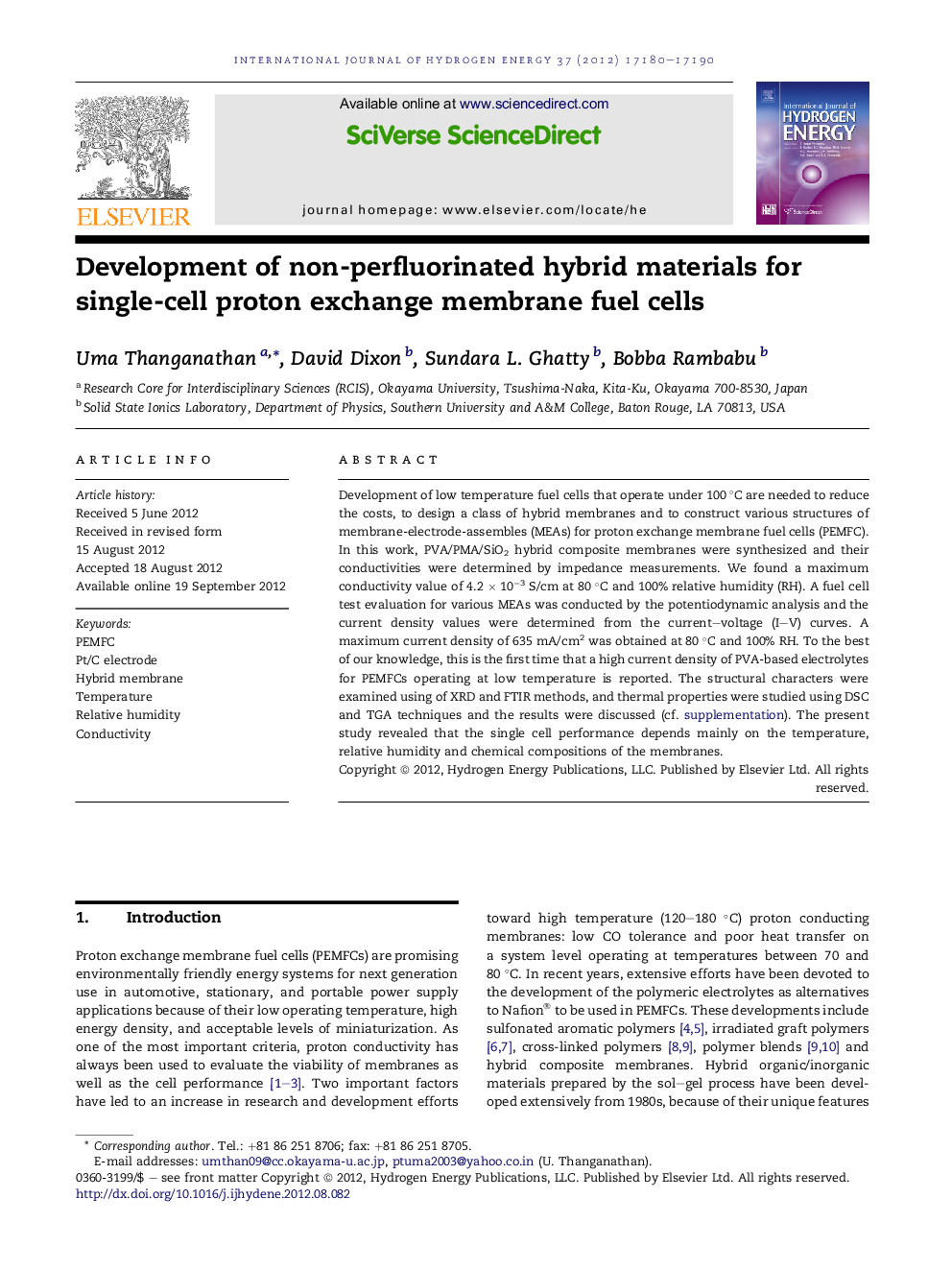| Article ID | Journal | Published Year | Pages | File Type |
|---|---|---|---|---|
| 1270902 | International Journal of Hydrogen Energy | 2012 | 11 Pages |
Development of low temperature fuel cells that operate under 100 °C are needed to reduce the costs, to design a class of hybrid membranes and to construct various structures of membrane-electrode-assembles (MEAs) for proton exchange membrane fuel cells (PEMFC). In this work, PVA/PMA/SiO2 hybrid composite membranes were synthesized and their conductivities were determined by impedance measurements. We found a maximum conductivity value of 4.2 × 10−3 S/cm at 80 °C and 100% relative humidity (RH). A fuel cell test evaluation for various MEAs was conducted by the potentiodynamic analysis and the current density values were determined from the current–voltage (I–V) curves. A maximum current density of 635 mA/cm2 was obtained at 80 °C and 100% RH. To the best of our knowledge, this is the first time that a high current density of PVA-based electrolytes for PEMFCs operating at low temperature is reported. The structural characters were examined using of XRD and FTIR methods, and thermal properties were studied using DSC and TGA techniques and the results were discussed (cf. supplementation). The present study revealed that the single cell performance depends mainly on the temperature, relative humidity and chemical compositions of the membranes.
Graphical abstractFigure optionsDownload full-size imageDownload as PowerPoint slideHighlights► The PVA/PMA/SiO2 hybrid composite membranes were prepared via sol–gel technique for H2/O2 PEMFCs. ► The thickness of the membrane was approximately 50 microns. ► A maximum current density of 635 mA/cm2 was obtained at 80 °C and 100% RH using catalyst layer prepared by ultrasonic method. ► These alternative hybrid membranes are promising electrolytes for H2/O2 PEMFC systems operating at temperatures below 100 °C.
